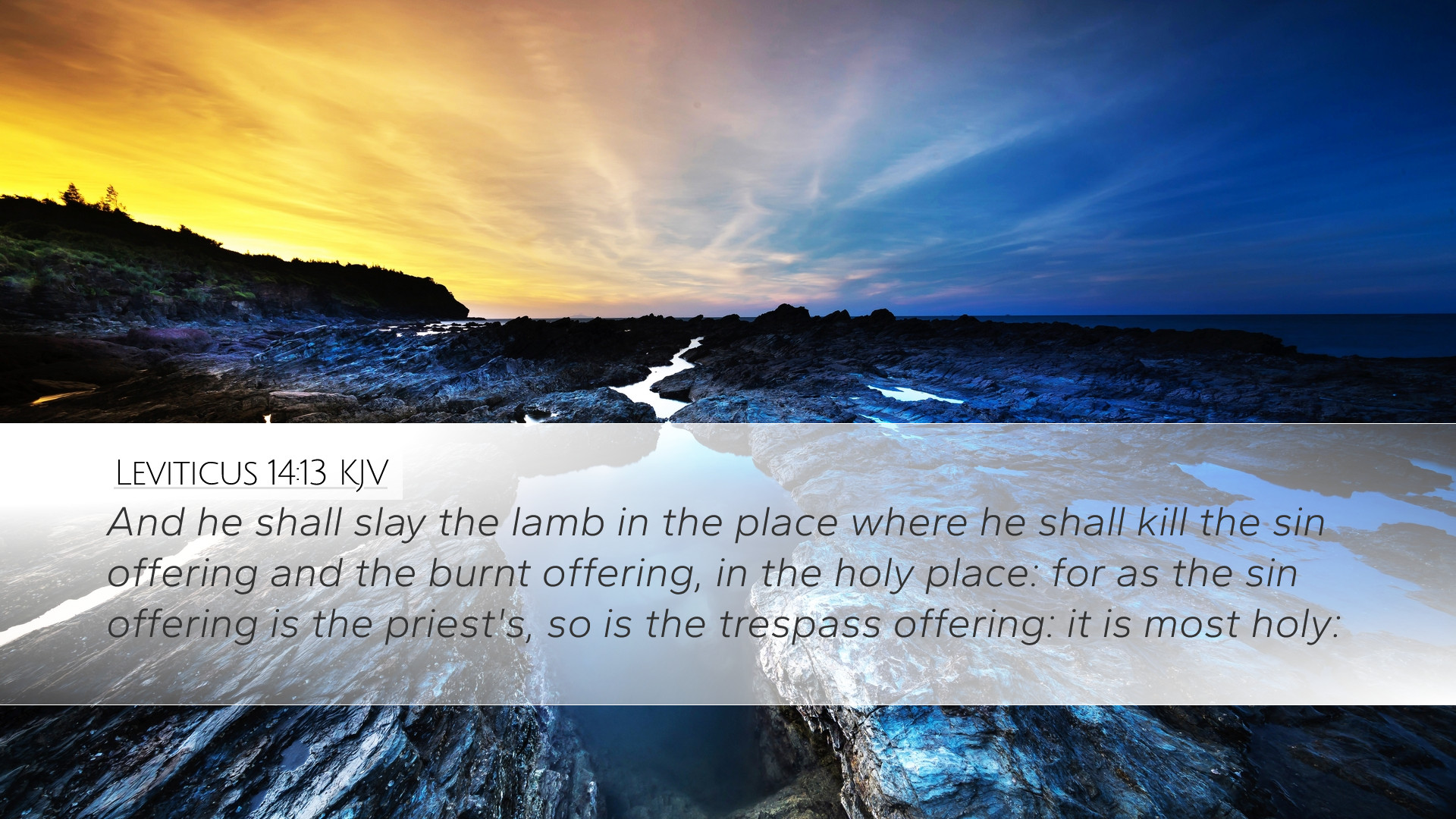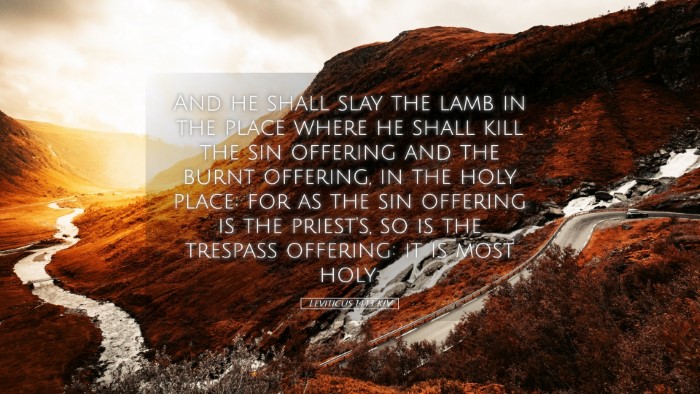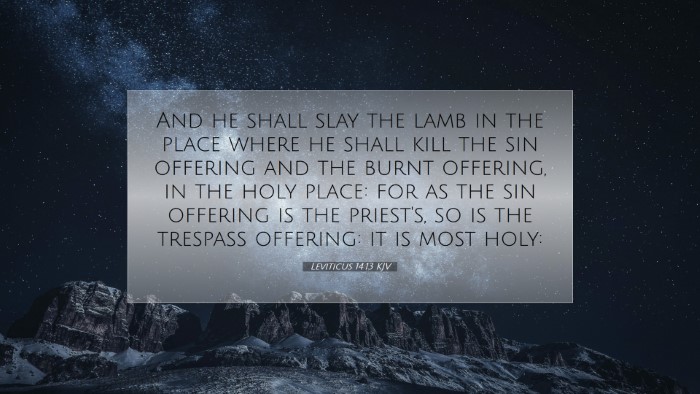Commentary on Leviticus 14:13
Leviticus 14:13 states: “And he shall kill the lamb in the place where he shall kill the sin offering and the burnt offering, in the holy place: for as the sin offering is the priest’s, so is the trespass offering: it is most holy.” This verse is part of the detailed instructions about the ceremony for the cleansing of a leper, which is a significant aspect of the book of Leviticus that touches on themes of purity, holiness, and atonement.
Background and Context
The broader context of Leviticus 14 deals with the laws of ceremonial cleansing for those healed of leprosy—a physical ailment that also had significant social and spiritual implications in the life of ancient Israel. The leper was considered unclean and socially ostracized, necessitating a ritual to restore them not only to health but to full participation in the covenant community.
The Significance of Sacrifice
In this particular verse, the act of slaughtering a lamb carries deep symbolic weight. Matthew Henry highlights the importance of sacrifice in the biblical economy, noting that sacrifices are a means by which believers can express their dependence on God and their need for atonement. The lamb represents both innocence and the idea of substitution, as the life of the lamb is given in place of the life of the sinner.
Holiness and Sacred Ritual
Albert Barnes elaborates on the notion of holy things being administered in a holy place. He points out that this emphasizes the sacred nature of the rituals and the necessity for approaching God in a manner that is deemed acceptable. The slaughtering of the lamb in a holy place not only amplifies the seriousness with which Israel was to regard their spiritual state but also reflects the greater truth that all access to God is contingent upon His design and holiness.
Priestly Mediatorship
Adam Clarke comments on the role of the priests in this ceremony, which acts as mediators between the people and God. The priesthood in Israel had the crucial function of overseeing the sacrificial system and ensuring that God's ordinances were followed. This underscores the importance of ordained leadership in the church today. The priest's ritual responsibilities serve as a foreshadowing of Christ’s ultimate sacrifice, reinforcing the notion of Him as our mediator (Hebrews 9:14).
Typology and Christological Significance
The death of the lamb in Leviticus 14:13 can be interpreted typologically, reflecting a deeper Christological significance. Matthew Henry asserts that every offering foreshadows the ultimate sacrifice of Jesus Christ. As the sacrificial lamb without blemish, Christ fulfills the requirements laid out in the Law. His death and resurrection provide the ultimate means of cleansing and reconciliation, thereby fulfilling the sacrificial system in which Israel participated.
Theological Implications
- Atonement: The act of killing the lamb signifies the atoning work of Christ. Understanding the weight of sin and the need for atonement is essential for believers. As Romans 3:23 states, “for all have sinned and fall short of the glory of God,” the sacrificial system pointed to humanity’s need for redemption.
- Cleansing and Restoration: Leviticus 14:13 highlights a process that is not merely about physical healing but about spiritual cleansing. The leper’s cleansing results in restoration to the community of faith, reminding us that God’s grace extends to the marginalized and broken.
- Holiness of God: The specificity of the instructions reflects the holiness of God and the seriousness with which one must approach Him. This serves as an admonition that our worship and offerings must be made with reverence (Hebrews 12:28).
Application for Today
For pastors and theologians, Leviticus 14:13 encourages deep reflection on the themes of atonement, holiness, and the necessity of mediatorial roles within the church. It serves as a reminder of the serious nature of sin and the lengths to which God goes to restore relationship with His people.
Students of the Bible can appreciate this verse as part of a rich tapestry of scripture that foreshadows the coming of Christ and His redemptive work. Every act of obedience demonstrated by the Israelites during these rituals served a purpose in teaching about divine grace and mercy.
Indeed, Leviticus 14:13 encapsulates profound theological truths worthy of study and application within the life of the church, urging believers to recognize their identity in Christ as cleansed and restored individuals, called to uphold the holiness of God in their lives.


